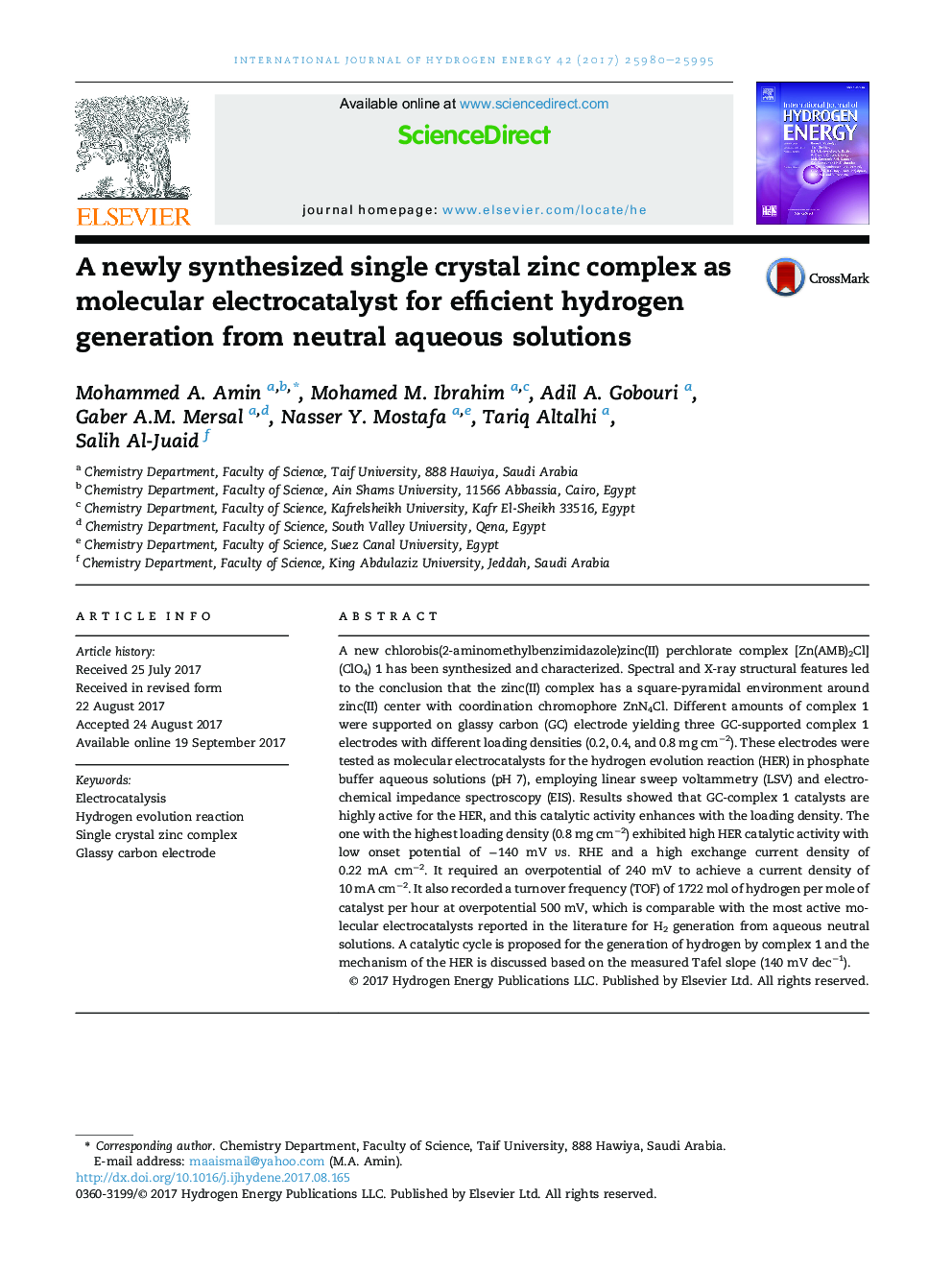| Article ID | Journal | Published Year | Pages | File Type |
|---|---|---|---|---|
| 5145161 | International Journal of Hydrogen Energy | 2017 | 16 Pages |
â¢A new single crystal zinc(II) complex was synthesized and fully characterized.â¢The zinc(II) complex has a square-pyramidal environment around zinc(II) center.â¢The complex efficiently generated H2 from neutral aqueous solutions.â¢It recorded high TOF (1722 mol H2/mole catalyst/hour) at 500 mV.â¢Its activity is comparable with the most active molecular electrocatalysts.
A new chlorobis(2-aminomethylbenzimidazole)zinc(II) perchlorate complex [Zn(AMB)2Cl](ClO4) 1 has been synthesized and characterized. Spectral and X-ray structural features led to the conclusion that the zinc(II) complex has a square-pyramidal environment around zinc(II) center with coordination chromophore ZnN4Cl. Different amounts of complex 1 were supported on glassy carbon (GC) electrode yielding three GC-supported complex 1 electrodes with different loading densities (0.2, 0.4, and 0.8 mg cmâ2). These electrodes were tested as molecular electrocatalysts for the hydrogen evolution reaction (HER) in phosphate buffer aqueous solutions (pH 7), employing linear sweep voltammetry (LSV) and electrochemical impedance spectroscopy (EIS). Results showed that GC-complex 1 catalysts are highly active for the HER, and this catalytic activity enhances with the loading density. The one with the highest loading density (0.8 mg cmâ2) exhibited high HER catalytic activity with low onset potential of â140 mV vs. RHE and a high exchange current density of 0.22 mA cmâ2. It required an overpotential of 240 mV to achieve a current density of 10 mA cmâ2. It also recorded a turnover frequency (TOF) of 1722 mol of hydrogen per mole of catalyst per hour at overpotential 500 mV, which is comparable with the most active molecular electrocatalysts reported in the literature for H2 generation from aqueous neutral solutions. A catalytic cycle is proposed for the generation of hydrogen by complex 1 and the mechanism of the HER is discussed based on the measured Tafel slope (140 mV decâ1).
